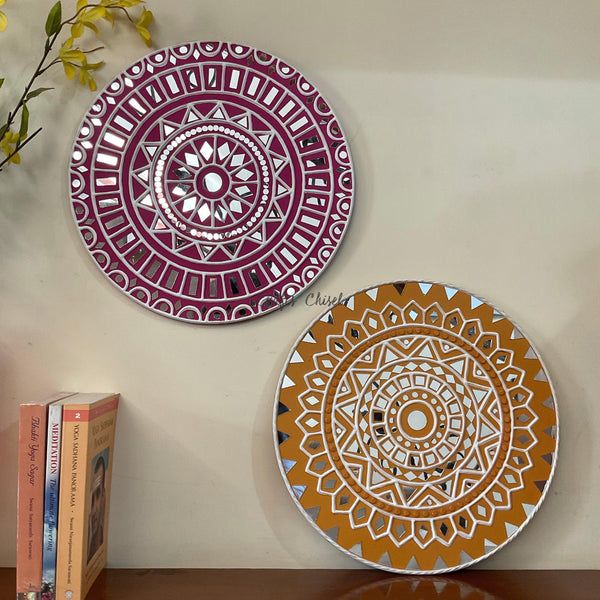We are all aware of famous artists during the Renaissance period like Michelangelo and Donatello who were known for creating life-like sculptures and art pieces. Thousands of people visit museums and galleries every year to see notable Relief artworks like Madonna of the Stairs, Battle of the Centaurs, The Feast of Herod, etc. Relief Art may have gained popularity in European countries during the Renaissance period, but the origins of this artwork can be traced back to the Indian subcontinent and the middle eastern cultures as early as 3500-600 BCE.
History and Origin Relief Art
This is a unique form of art where pieces obtained from sculpting are secured to a block or slab of the same material. This block acts as a background, and the sculpture projects a raised image from the surface. The word Relief is derived from the Latin word ‘relevo’, meaning ‘to rise’. It may be popular in the European region but it is believed that the relief art was first used by Egyptians and Chinese to print on fabric and make seals for artworks. The Arabs learned this technique from the Chinese and spread it to European countries.
Materials Used
A wide range of materials can be used to create the Relief Artwork. The most used materials are wood, stone, marble, brass, aluminum, etc. A chisel and hammer are used to carve various designs and patterns on the surface to create unique art pieces.
Types of Relief Art
As discussed earlier, this art form gives the impression that the sculpture is raised from the surface. Relief art can be categorized into various types based on the projection of the sculpted part from the background surface, which is described as follows:
- Low Relief or Bass Relief- This type of sculpting usually has very low depth, that is, it is not raised too much from the background surface. Overall, it gives a flat image on the surface. This type of relief art was usually used for making coins as it did not require much effort and was cheaper to make.
- Mid Relief or half relief- This is the most common type of relief art which can be found on the Indian Subcontinent that was used to describe Hindu and Buddhist Cultural tales. In this type, we see half of the subject projecting out of the surface. We can find the beautiful Mid Relief artworks based on rocks in the caves of Ajanta and Ellora in Maharashtra.
- High Relief- In High Relief art, the projection is in such a way that part of the sculpture is entirely detached from the background and the attached part is in low relief. The details and depth of the sculpture make it unique and give an overall lifelike image. The heads and limbs carved are completely detached from the background. Hence, unlike low relief, these have a depth and appear to be standing freely.
- Sunk Relief- Skunk relief is slightly different from other relief techniques. The other relief techniques show a raised image; in this method, the surface or background seems raised as the artwork is carved into the blocks. Sunk relief works were popular in ancient Egypt.
- Counter Relief- In this method, the image is modeled in a laterally inverted manner so that it can be used as a mold. Hence, when it is impressed on surfaces like wax, it gives the impression of regular relief art. Counter relief was used to mainly create seals.
Themes and Motifs
In India, relief art is an important part of our culture as this method was used to create various intricate designs in temples and other monuments. The UNESCO World Heritage site Ajanta Caves is one of the best examples which describe relief art of Indian origin. Located in the Aurangabad district of Maharashtra, the theme of these sculptures describes various lore and scenes from the Jataka Tales. The Jataka tales depict various stories of Buddha in animal and human form.
The Caves of Udayagiri and Khandagiri in Odisha is an important landmark in India famous for Relief art sculpting. We can see figures of Apsaras (nymphs), elephants, and other war animals sculpted on the walls of these caves.
The Sun Temple at Konarak is famous for the miniature detailing of the sculptures of Relief art. The figures in the temple are musicians playing their instruments. Some figures of Hindu deities are also present. The designs are so minute and mesmerizing that it is often compared to the minute detailing of gold ornaments.
Mahabalipuram in the Chengalpattu district of Tamil Nadu is a historic site popular for Relief Sculptures. These sculptures are known for the natural pose of human figures.
Renowned Artists
Vivek K Agarwal and Vikas Gupta are the founders of the Indian Sculpture Foundry. They make sculptures and statues based on relief art. We can see sculptures made by them in various places like Indira Gandhi International Airport New Delhi, Indian Army HQ, etc. The wall art at the Delhi International Airport is a relief structure showing a Rajasthani Procession of Royalty.
Current Scenario
The Relief artworks found in our country are centuries old. Due to the lack of proper maintenance, some of the sculptures are damaged. Natural calamities have also caused these structures to disintegrate. Online Platforms like ARTSofINDIA.in always promote saving these unique art forms. In November 2022, Camel Art Foundation in collaboration with Sri JJ School of Art Hosted a 4-day Art Camp and Exhibition at Ajanta caves to learn about this art form. About 80 artists from reputed art schools participated in this event.
Writer- Madhurima Sengupta
Picture Source: Pigmentti





